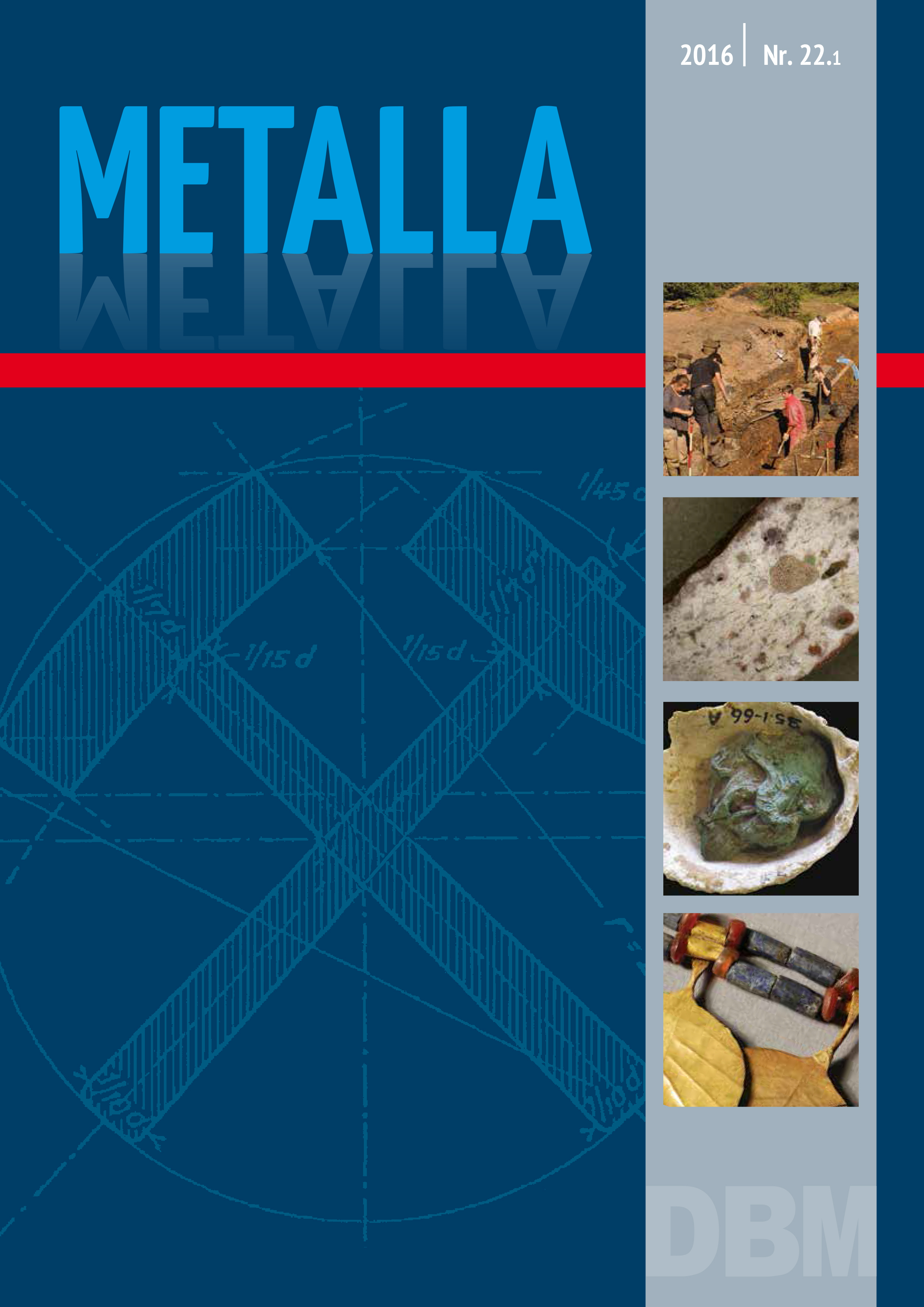Where Does the Gold from the Cemetery of Ur Come From? – Provenancing Gold Sources Using Analytical Methods
DOI:
https://doi.org/10.46586/metalla.v22.2016.i1.98-106Keywords:
Ur, Gold, Mesopotamia, geochemical analyses, LIA, PGEAbstract
The focus of our analysis is on the richly decorated Early Dynastic Royal Tombs. These graves are mixed in date and grouped here as Akkadian to Ur III period. Twelve additional objects are without stratified contextual information and are discussed separately. The main components of the gold artifacts are gold, silver and copper. Between 15 and 45 percent of silver and between 1 and 6 percent of copper was typical for the samples. The jewelry of the Early Dynastic period has the same composition as the later Akkadian and Third Dynasty. Based on analysis of their main components, they could come from the same sources. During the analyses it could be clarified whether the gold composition is natural or is an intentional alloy. The golden jewelry from Ur is a natural alloy of gold and silver originating from placer gold. Further the provenance of the gold can thus be stated: the source of the gold from Ur is likely located within the Tethyan Euarasian Metallogenetic Belt.
Downloads
Published
Issue
Section
License
Copyright (c) 2016 Moritz Jansen, Andreas Hauptmann, Sabine Klein

This work is licensed under a Creative Commons Attribution 4.0 International License.



